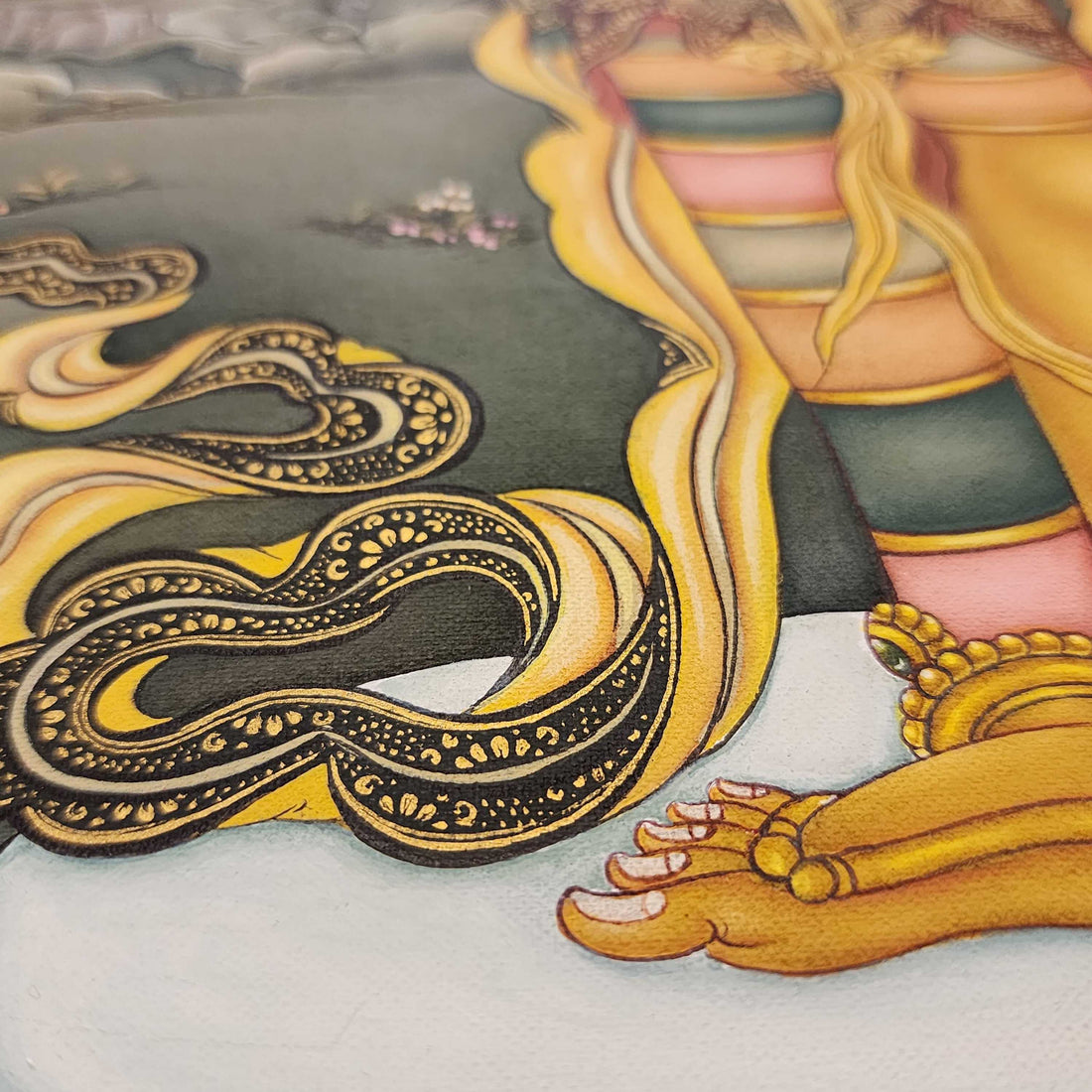
The Symbolism of the Lotus Flower in Thangka Art
Share
Introduction
The lotus flower is one of the most powerful and recurring symbols in Buddhist art, especially in Thangka paintings. Beyond its beauty, it represents purity, spiritual awakening, and the potential for enlightenment.
Purity Rising from the Mud
— The lotus grows in muddy waters but blossoms pure and unstained.
— This symbolizes the ability of beings to rise above suffering and reach enlightenment.
Stages of Growth and Spiritual Journey
— Closed Lotus: Represents potential for enlightenment not yet realized.
— Partially Opened Lotus: Symbolizes progress on the spiritual path.
— Fully Bloomed Lotus: Represents full awakening and Buddhahood.
Different Colors and Their Meanings
— White Lotus: Purity of mind and spiritual perfection.
— Red Lotus: Love, compassion, and the heart.
— Blue Lotus: Wisdom and knowledge.
— Pink Lotus: Supreme lotus, often associated with the Buddha himself.
— Gold Lotus: Represents enlightenment and divine energy.
Deities and the Lotus Throne
— Many deities, including Tara and Avalokiteshvara, are depicted seated on a lotus throne.
— This emphasizes their transcendence, untainted by worldly suffering.
The Lotus in Daily Practice
— Meditators visualize the lotus to inspire purity and compassion.
— Offering a lotus in rituals symbolizes devotion and the wish for enlightenment.
Conclusion
The lotus flower in Thangka art is more than decoration. It is a timeless symbol of purity, transformation, and spiritual awakening. It reminds practitioners that, like the lotus, they too can rise above challenges and blossom into enlightenment.
